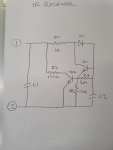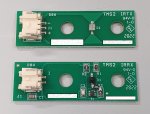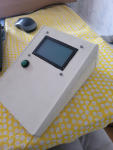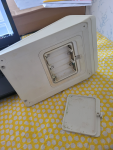I am not sure on how to start this project, so I am looking for advise. This may be something that everyone already know lots about!
I would like to build a tester to show that an IR diode is working correctly and its it is being detected by an IR receiver. Sounds so simple. Both of these IR devices are mounted onto a machine. This device can be connected to the wire harness to prove both devices are working without removing them.
(A hand held optical tester is not suitable as there is no access to these IR devices when they are powered and working)
I guess I can drive the output from a PWM pin but I am not sure about measuring the signal coming back.
Can this be all done with a single 08M2 or should I use 2 chips for TX & RX?
If anyone knows of a similar project I can study, or any suggestion ... it will be much appreciated.
I would like to build a tester to show that an IR diode is working correctly and its it is being detected by an IR receiver. Sounds so simple. Both of these IR devices are mounted onto a machine. This device can be connected to the wire harness to prove both devices are working without removing them.
(A hand held optical tester is not suitable as there is no access to these IR devices when they are powered and working)
I guess I can drive the output from a PWM pin but I am not sure about measuring the signal coming back.
Can this be all done with a single 08M2 or should I use 2 chips for TX & RX?
If anyone knows of a similar project I can study, or any suggestion ... it will be much appreciated.




